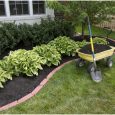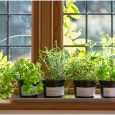
If you have an outside garden, you know how bittersweet the Fall season is. From the burst of plant life and full bloom of vegetation in Spring and Summer, it’s sad to see the flowers and plants in our gardens succumb to the increasingly cold temperatures.
However, a sadder scenario would be the unhealthy growth of plants and flowers when it gets warmer because we did not prepare our gardens well for Fall and Winter. Maybe you are not aware, but the way you leave your garden in Fall will determine how the vegetation grows back in Spring.
If you have no idea how to prepare your garden for Fall and Winter, here are some suggestions:
1. Scrape away all rotting and old plants
Some plants in your garden are through with their growth cycle and will do no good left in the earth. So, go through your lawn or garden, cutting off and clearing all old and dead plants. It will help to;
- Clear away potential nesting places for pests that if left there will only munch on your tender shoots in Spring.
- Prevent fungus, bacteria, and viruses from thriving in that area.
- Provide you with excellent material for your compost that will give you great manure in Spring or Summer
P.S: Just remember to cover your compost with a thick layer of mulch before the snow comes in to protect its nutrients from erosion.
2. Prepare your soil for the next growth season
Instead of leaving the soil flat and unattended, prepare it for Spring by tilling it and mixing in lots of manure, compost, bone meal, and other soil strengthening materials.
Throughout the Fall, the soil additions and tilling will break down the soil and add nutrition to it for the next batch of plants. Preparing the soil in Fall will also make it easy for you to till the ground when it gets warmer.
Just remember to cover the soil with a plastic sheet to preserve any fertilizers you have put in it, so Winter does not drain it all away. When Spring comes, you will only have to remove the plastic sheet, till the soil a bit and plant anything you like which will spring up superbly.
3. Care for and blanket perennials, shrubs, and trees outside
You cannot bring in your shrubs and trees from the cold, but you can protect them as much as possible. The same applies to perennials too. Weed them, cut off any dead or rotten parts and prune them where necessary.
Also fertilize and water your shrubs, trees, and perennials outside well before the temperatures get really low. When the ground starts to freeze, cover them with a thick coat of mulch (about 7 inches) and wait for Spring when they will thank you with phenomenal growth.
4. Store bulbs properly for Spring

Some plants you can dry out and place in a safe place to plant when Spring comes. It’s called overwintering, and plants like bulbs work this way.
Harvest your bulbs or any other perennials plants such as gladiolus and Cannas you want to save for planting in Spring before they get hit by frost. A great time to do it is when you notice their leaves going brown. You can then dig them up, remove any dirt from them, and dry them out to make sure they do not rot when you store them -just don’t dry them out too much.
Put your bulb and other perennials in sawdust, dry peat moss, styrofoam or old newspapers making sure they do not touch before you store them away. A great place to store your perennials is where it’s cool and not freezing like in an aerated, cool, cupboard.
5. Take care of containers and gardening tools
Since you are unlikely to do much gardening in Fall and definitely not in Winter, you should put your tools away. After preparing your garden;
- Clean your tools, oil them and put them in a dry place.
- Clean out any hanging pots or outside plants containers, and keep them in the shed or store. (If you leave them out they may crack from the extreme temperature changes)
- Empty the water out from your hose completely and hang it in the shed. Ensure you shut off all outside water valves too.
- Drain your lawn mower, power saw, and any other gardening power equipment of oil and store them properly in a dry area of the shed.
It’s essential to winterize your garden tools and equipment because you get to use them for long as they stay in great shape. Learn more about it here.
6. Prepare your lawn for the cold season
When it comes to your lawn, here is what you can do to prepare for Fall and Winter.
- Mow your lawn until it stops growing in late Fall. If you leave patches of long grass out in Winter, they are likely to become moldy and will not grow back well in Spring.
- Rake away any dead leaves from your lawn and use them in your compost. Leaving the leaves on the lawn will mean they will rot over your grass and attract pests, fungus, and other problems to develop on your lawn such as brown patches.
- Nourish your lawn by applying Fall lawn fertilizer before the ground freezes (about 2 or 3 weeks prior). That way, in Spring, your grass will grow back healthy and strong.
7. Pre-stock for Spring
Once you have prepared your garden and lawn for Fall with the tips above, you can also go ahead and prepare for the planting season.
In Fall, you will find that mulch, soil, and some fertilizers are often sold cheap in the clearance sale at your garden center. Why don’t you take this chance to stock up for your Spring gardening at a bargain?
Just buy the fertilizer, dirt, and mulch and store the bags in your garden shed. When Spring comes, you will be ready to plant and won’t have to worry about visiting the garden center for supplies.
Conclusion
These are 7 ways you can prepare your garden for Fall and Winter. It’s a great way to ensure your garden springs back healthy and strong in Spring (pun intended). Try it this Fall and see how great things look in your garden when everything starts to bloom.




